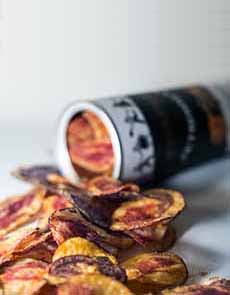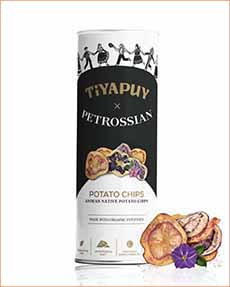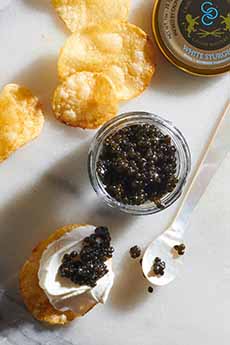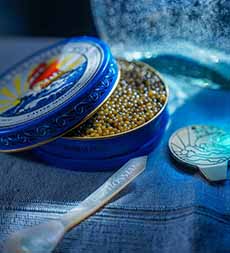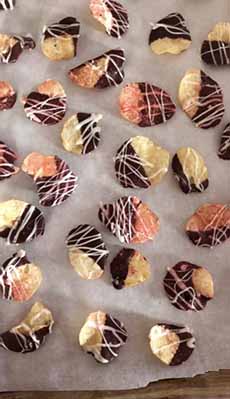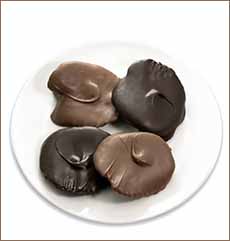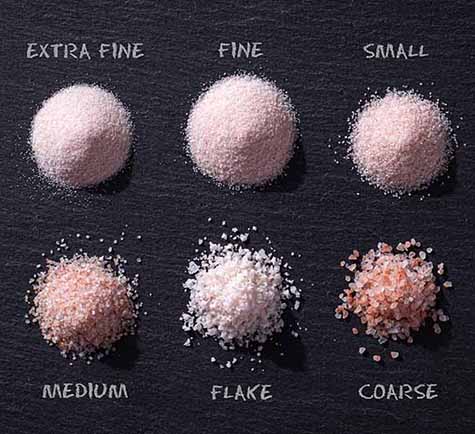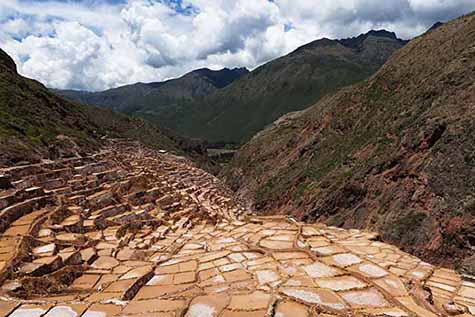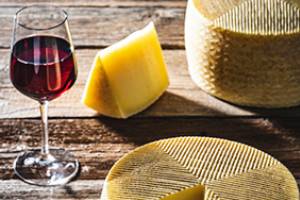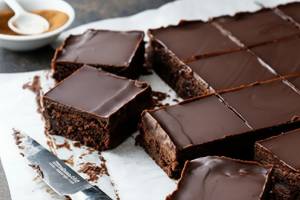Potato Chips From Petrossian: Are These The Best?
|
|
If your Valentine has a passion for gourmet potato chips, might he or she want to try “the best?” In this case, the best means light on the salty and oilyness. These chips were created by Petrossian to pair with their world-famous caviar. Of course, a tin of caviar along with the chips would make a truly memorable Valentine’s gift, but the heirloom potato chips are special on their own. If you expect to share, by two canisters. Says Petrossian, “For years, we’ve been searching for the perfect potato chip to pair with our incomparable caviar. It wasn’t easy. Many were too salty. Some were too bland. Others clashed with the buttery brine and complex flavors of our caviar. “But in the Andes mountains, we discovered a strain of native, organic potatoes that have remained unchanged for thousands of years. [Editor’s note: Potatoes are indigenous to the Andes] “Lightly seasoned with Maras salt and delicately prepared in sunflower oil, this mixture of colorful chips provides any pairing with a crisp texture and a robust, earthy tone.” The salt is also exceptional. Maras pink salt, also known as pink Peruvian salt, is one of the world’s finest. There’s more about it below. Whether you’re topping the chips with caviar, enjoying them on their own, or dipping them in chocolate (photos #5 and #6), these Andean delights contribute to a beautiful celebration. > Get your Petrossian potato chips here. > The history of potato chips. > The different types of potatoes: a photo glossary. Also known as Salt of the Incas, this special pink, flavorful salt is extracted from the Maras Salt Mines in Peru’s Sacred Valley of the Incas. Don’t confuse it with Maris Sal, also known as Dead Sea Salt, which has its own special qualities but is a very different product. Maras salt comes from Peru: the District of Maras, Province of Urubamba, Department of Cusco, approximately 4,000 meters above sea level (photo #8). It produces a 100% natural spring salt, with high mineral content (calcium, iron, magnesium, zinc, among others). The pink color of the salt comes primarily from its iron oxide content, along with other trace minerals. Since it is not refined or bleached like table salt, its natural pinkish color and mineral complexity are retained. For many thousands of years, the area has had a subterranean hypersaline (salt water) spring. The resurgence* comes from the middle of the mountain, bringing high-salinity salt water infused not just with iron, but with calcium, magnesium and potassium as well. The mines have been worked since pre-Inca times, for more than 500 years†. The Incas expanded and developed the salt terraces (photo below), and local communities have continued to harvest salt using traditional methods ever since. The Incas determined how to channel the water inside the mountain into outdoor pools where the sun evaporates and crystallizes it into salt. These salt pans are still in use today, operated by local families using ancestral techniques. Today, the Salt Mines of Maras (Salineras de Maras) are worked by families from the Maras and Pichingoto communities, who have inherited the salt ponds. The salt cultivation techniques from generation to generation. Different varieties of Maras salt are available: fine grain, coarse grain, spiced, smoked, and citric salt for seafood. > The different types of salt: a photo glossary.
|
|
|
________________ *Resurgence is the geological term for the place where a mineral spring emerges from inside a mountain. †The Inca Empire spanned 1438 to 1533. It began when Pachacuti became emperor in 1438; he transformed the Kingdom of Cusco into a vast empire. The Empire reached its peak under Huayna Capac in the early 16th century, covering large parts of modern-day Peru, Ecuador, Bolivia, Chile, and Argentina. The Empire’s decline began with the death of Huayna Capac around 1527, leading to internal strife. It ultimately fell to Spanish conquistadors, led by Francisco Pizarro, in 1533. The Incas were one of the greatest civilizations in pre-Columbian America. They were master builders, developed advanced agricultural techniques including terrace farming in the steep mountains, had a centralized government with an efficient bureaucracy to manage the vast empire. They promoted cultural exchange and religious practices throughout their territories, often integrating conquered peoples by offering them the chance to become part of the Empire rather than subjugating them. ‡Tiyapuy, the brand name of the potato chips, is a Quechua word. Quechua is the language spoken by the Incas and many indigenous Peruvians today. The meaning of “tiyapuy” generally conveys the idea of settling in a place, staying, or dwelling. It reflects the people’s deep connection to land. CHECK OUT WHAT’S HAPPENING ON OUR HOME PAGE, THENIBBLE.COM.
|
||
